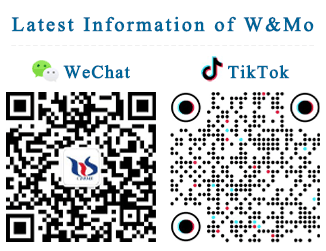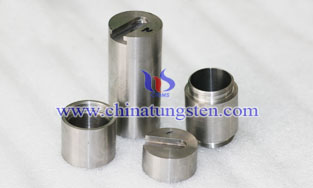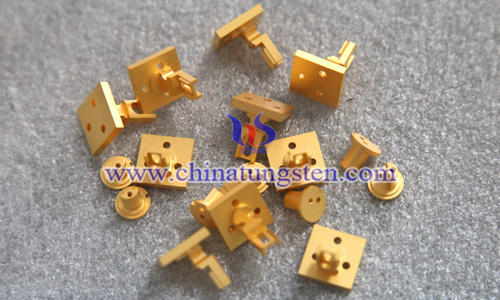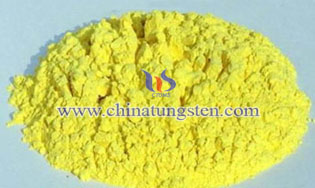How to Improve Electrochemical Properties of Tungsten Oxide Used in Lithium Batteries?
- Details
- Category: Tungsten's News
- Published on Wednesday, 08 February 2023 22:14
- Hits: 740
When used as anode materials for lithium batteries, tungsten oxide suffers from structural collapse and rapid capacity drop during charge/discharge cycles due to large volume changes. In addition, their low electrical conductivity leads to poor rate performance. So far, there are some effective methods to improve the electrochemical properties of tungsten oxides. When O-vacancies are introduced into tungsten oxides, their conductivity may be greatly improved, and researchers have tried to vary the vacancy concentration to obtain higher conductivity while employing nanostructures in SCs and LIBs.
In addition, carbon materials such as graphite, reduced graphite and carbon nanotubes are often added to tungsten oxide to obtain composite materials due to their high conductivity and structural stability. Non-stoichiometric tungsten oxides are common in nature. The O vacancies inside them have a positive effect on electron transport. Furthermore, WO3 is an n-type semiconductor whose electrical conductivity depends mainly on the concentration of free electrons in its conduction band, or in other words, the concentration of its internal donor.

By adjusting the ratio of W to O in the tungsten oxide, the concentration of vacancies changes accordingly and its electrical conductivity increases dramatically. Preferred, therefore, are tungsten oxides of sub-Ascendancy, such as W18O49 and W20O58, and tungsten oxides with naturally occurring O vacancies. For example, a mesoporous m-WO3-x electrode was prepared by Yoon et al. Although its initial coulombic efficiency was only 53%, its reversible capacity reached 748 mA.h.g-1.
In addition, its conductivity of 1.76 S.cm-1 is competitive with that of mesoporous carbon materials (3.0 S.cm-1). Li et al. increased the density of O vacancies by annealing WO3 under N2 environment. The introduced O vacancies significantly improved the electrical conductivity, resulting in good rate performance and reversibility of the electrode. An appropriate concentration of O vacancies can translate into an increase in conductivity, while an excess of O vacancies can be self-defeating. Sometimes we can also fill O vacancies with other atoms of similar diameter to O. Cui et al. repopulated O vacancies with N atoms in WOx, converting them into ultrafine disordered clusters.
The introduction of N provides a number of redox sites that promote electrochemical properties, resulting in excellent high-speed performance for lithium batteries. In addition to the introduction of O vacancies in WO3, excess O in tungsten oxides is also helpful because excess O can lead to distortion of tunneling within the tungsten oxide. Inamdar et al. obtained WO3 with excess O by adjusting the ratio of Ar to O2 during radio frequency (RF) magnetron sputtering. The results showed that the charge transfer resistance of WOx was tested to be 215 Ω at a gas ratio of 7:3, which was much lower compared to 370.8 Ω when the gas was pure Ar. The researchers attributed this to the increased donor concentration caused by the excess O in the WO3.
Nanostructured WO3 can be easily obtained by sol-gel, hydrothermal and template methods. Wu et al. made WO3 nanotube bundles through a one-step hydrothermal and post-annealing process. Their initial specific discharge capacity and initial Coulomb efficiency were 871.9 mA h g-1 and 77.8%, respectively. WO3 nanocrystals and nanowires were prepared by Lim et al. Both samples showed high initial capacities of 867 and 954 mA h g-1 at 0.1C.

For example, the specific discharge capacity of WO3 nanowires remained at 552 mA h g-1 after 100 cycles, and their average Coulombic efficiency was 97.2% over 2-100 cycles. Yang et al. synthesized hierarchical flower-like WO3 using HCOOH as a structural guide in a hydrothermal method. Each nanopetal was composed of many nanorods. Their reversible capacity was 766 mA h g-1 after 50 cycles at a current density of 100 mA g-1 and remained at 720 mA h g-1 even after 100 cycles.
Furthermore, the capacity was up to 576.8 mA h g-1 at a current density of 500 mA h g-1. Numerous experimental results demonstrate the good cycling and rate performance of layered flower-like WO3. Sasidharan et al. used poly(styrene-b-[3-(methacryloylamino) propyl] trimethylammonium chloride-b-epoxide) micelles (PS-PMAPTAC-PEO) as a template to produce WO3 hollow nanospheres. The entire triblock copolymer is composed of PS as its core, PMAPTAC as its shell, and PEO as its corona.
Reference: Han W, Shi Q, Hu R. Advances in electrochemical energy devices constructed with tungsten oxide-based nanomaterials[J]. Nanomaterials, 2021, 11(3): 692.
- Tungsten Manufacturer & Supplier, Chinatungsten Online: www.chinatungsten.com
- Tungsten News & Prices of China Tungsten Industry Association: www.ctia.com.cn
- Molybdenum News & Price: news.molybdenum.com.cn
- Tel.: 86 592 5129696; Fax: 86 592 5129797; Email: sales@chinatungsten.com








 sales@chinatungsten.com
sales@chinatungsten.com